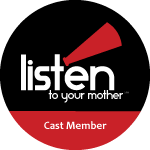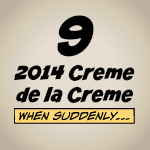Thank you for your continued support, encouragement, kind words, positive thoughts and prayers!
It has been a relaxing day with Bob and Sean. Bob has been getting a lot done around the house (cleaning, straightening and such that things I haven’t been able to do as much of this past week or so). Sean has been enjoying playing with some of the presents he got at the family Christmas party last night.
We did tell Sean today that our baby is sick. We didn’t make a big deal about it and he didn’t ask any questions after we told him. He just said “okay.” So we think it is good that he knows and now if we want to reference it we can and if he wants to find out more, he will inquire.
It may not surprise you that I have spent a good amount of my day resting on the couch researching fetal heart block types, causes, symptoms, treatments, prognosis, etc. I feel a lot more informed and prepared for our appointment tomorrow morning. I think what I have learned will help me to better understand what the doctor(s) might be explaining to us tomorrow and has helped me to formulate questions to ask, depending on what we find out.
Here is an article I found on Cigna’s website that defines “Congenital Heart Block.” After everything I have read today, it seems to be one of the more easy to understand, comprehensive and yet also concise explanations:
CONGENITAL HEART BLOCK
Synonyms: Atrioventricular (AV) Block
Disorder Subdivisions:
First Degree Congenital Heart Block
Second Degree Congenital Heart Block (Wenckebach [Mobitz I]; Mobitz II; included)
Third Degree Congenital (Complete) Heart Block
General Discussion
Congenital heart block is characterized by interference with the transfer of the electrical nerve impulses (conduction) that regulate the normal, rhythmic, pumping action of the heart muscle (heart block). The severity of such conduction abnormalities varies among affected individuals.
The normal heart has four chambers. The two upper chambers are the atria and the two lower chambers are the ventricles. Within the right atrium of a normal heart is a natural pacemaker that initiates and controls the heartbeat. The electrical stimulus travels from the pacemaker (sinoatrial or SA node) to the ventricles along a very specific path consisting of conducting tissue and known as the AV (atrioventricular) node. As long as the electrical impulse is transmitted normally, the heart behaves normally.
If the transmission of the signal is impeded, the blocked transmission is known as a heart block or an AV block. If the heart block occurs in the fetus or newborn, the condition is known as congenital heart block. This condition has nothing at all to do with the flow of blood or with the blockage of a major or minor coronary artery. It is an electrical problem rather than a hydraulic one.
Heart blocks are categorized according to the degree of impairment of the patient. The categories are first, second and third degree heart block
Symptoms
In first degree heart block or AV block, the two upper chambers of the heart (atria) beat normally, but the contractions of the two lower chambers (ventricles) slightly lag behind because the electrical impulse moves though the AV node more slowly than normal. If the time taken for the impulse to move from the atria to the ventricles is longer than about 0.2 seconds, it is called a first degree heart block. In most cases, individuals with this mild form of the disorder do not experience any symptoms (asymptomatic). In some cases, affected individuals may fatigue quickly and experience difficulty breathing (dyspnea).
Second degree heart block or AV block, is characterized by dropped or skipped beats because some signals from the atria do not reach the ventricles. This form of the disorder may be separated into two subgroups: Wenckebach (Mobitz I) and Mobitz II.
In the Wenckebach or Mobitz I type, there is a progressive delay between heartbeats until a beat is dropped or skipped. Because the consequences are usually limited to short-term dizziness and modest fatigue, the condition is not considered dangerous.
The Mobitz II type is more rarely encountered and usually carries greater risks. It is characterized by an extremely low heartbeat because most of the electrical impulses generated cannot get to the ventricles. Thus, the number of heartbeats is reduced. In many cases, affected individuals may fatigue quickly and/or experience difficulty breathing (dyspnea) and/or episodes of unconsciousness (syncope). It is, however, not uncommon that the person affected is symptomless (asymptomatic). In some cases, a pacemaker inserted into the upper chest may be required.
In third degree or complete heart block, the electrical signals do not reach the lower chamber from the upper chamber. Thus, the atria and ventricles beat independently, as a separate bundle of specialized nerves takes over as a natural pacemaker in the ventricles (lower chamber). Individuals with complete heart block may experience episodes of unconsciousness (syncope), breathlessness, lack of energy (lethargy), and/or low blood pressure (hypotension). In addition, complete heart block may be associated with an impaired ability of the heart to pump blood effectively (congestive heart failure); chest pains; episodes of dizziness with or without loss of consciousness due to fluttering (fibrillation) or cessation (asystole) of the heart (Stokes-Adams attacks); and/or enlargement of the heart (cardiomegaly). In rare cases, infants born with complete heart block may have abnormal accumulation of fluid within tissues of the body (hydrops fetalis).
Causes
In many cases, the exact cause of congenital heart block is not known. In some cases, the fetal cardiac conduction system is damaged by antibodies that cross from the mother to the fetus via the placenta. Most often these antibodies were originally produced by the mother’s body to fight an infection in the uterus or in response to an autoimmune disorder, such as systemic lupus erythematosus. Autoimmune disorders are caused when the body’s natural defenses against foreign or invading organisms (e.g., antibodies) begin to attack healthy tissue for unknown reasons. (For information on Systemic Lupus Erythematosus, choose “Lupus” as your search term in the Rare Disease Database.)
According to the medical literature, there may be a genetic form of congenital heart block that may be inherited as an autosomal recessive genetic trait, although some researchers do not rule out an autosomal dominant method of inheritance.
In some cases, congenital heart block may occur as a secondary characteristic of certain disorders or tumors of the heart muscle (myocardium).
Affected Populations
Congenital heart block is a rare disorder that appears to affect males and females in equal numbers. The incidence of complete congenital heart block is one in approximately 20,000 to 25,000 live births.
Related Disorders
Symptoms of the following disorder can be similar to those of congenital heart block. Comparison may be useful for a differential diagnosis.
Bundle branch block is a heart block caused by a lesion in one of the bundle branches in either the left or right sides of the heart. It usually indicates cardiovascular disease. Right bundle branchblock may be recorded in persons showing no clinical evidence of cardiovascular disease. In either case it is characterized by a slowing of the conduction in the bundle branches of the heart.
Standard Therapies
Diagnosis
As cardiac imaging techniques have improved, the prenatal diagnosis of congenital heart block is more common. Diagnosis depends on the results of one or more of several tests. These tests include fetal echocardiography as well as fetal electrocardiography. If congenital heart block is overlooked during pregnancy or if the physician prefers to wait for the birth of the baby, diagnosis is commonly confirmed during infancy or early childhood.
Treatment
Specific therapies for congenital heart block are symptomatic and supportive. In affected individuals who exhibit mild forms of heart block, treatment may not be required. A physician may recommend temporary or permanent surgical insertion of a pacemaker in certain cases. Permanent insertion of a pacemaker may be recommended for individuals with Stokes-Adams attacks, congestive heart failure or significant cardiomegaly, or infants with a ventricular rate of less than 55 beats per minute. In some cases, treatment of congenital heart block type I can consist of the administration of atropine, a drug that temporarily increases the AV conduction in the heart.
Investigational Therapies
Information on current clinical trials is posted on the Internet at www.clinicaltrials.gov. All studies receiving U.S. government funding, and some supported by private industry, are posted on this government website.
For information about clinical trials being conducted at the National Institutes of Health (NIH) in Bethesda, MD, contact the NIH Patient Recruitment Office:
Tollfree: (800) 411-1222
TTY: (866) 411-1010
Email: prpl@cc.nih.gov
There are currently (2005) two studies listed on the Clinical Trials web site related to congenital heart block. Both are sponsored by the National Institute of Arthritis and Musculoskeletal and Skin Diseases (NIAMS).
One is examining the use of corticosteroid drugs to improve the heart function and general health of newborns who have congenital heart block in association with lupus. This study is being conducted at locations in Connecticut, New Jersey, and New York. For information about enrollment, contact the NIH Patient Recruitment Office.
The other project involves the creation of a research registry for neonatal lupus. The symptoms of neonatal lupus include an abnormally slow heart beat (heart block) and a skin rash. This project is expected to continue until 2009. For information, visit the Clinical Trials web site or contact the NIH Patient Recruitment Office.
References
See web link for details: http://www.cigna.com/healthinfo/nord530.html











{ 1 comment… read it below or add one }
I am late on this news but praying still praying!